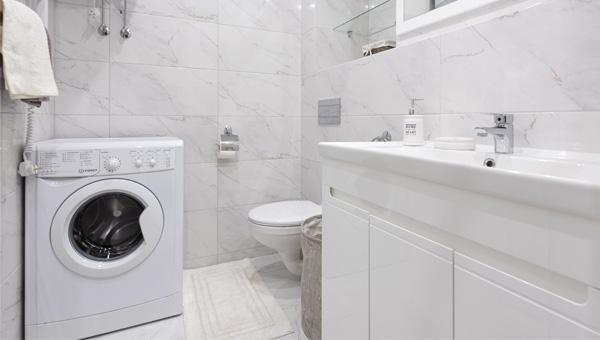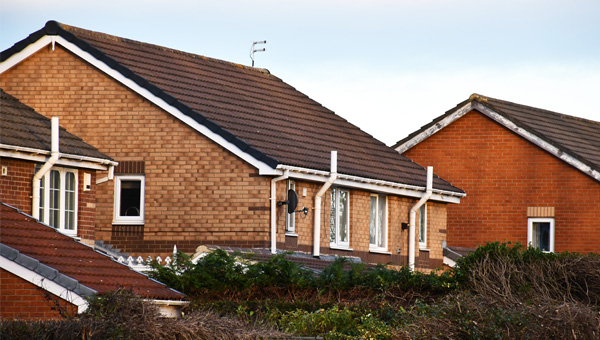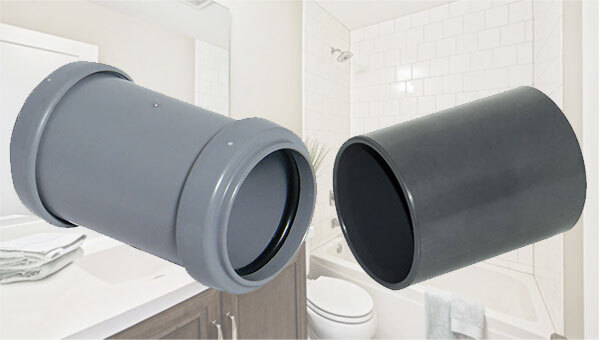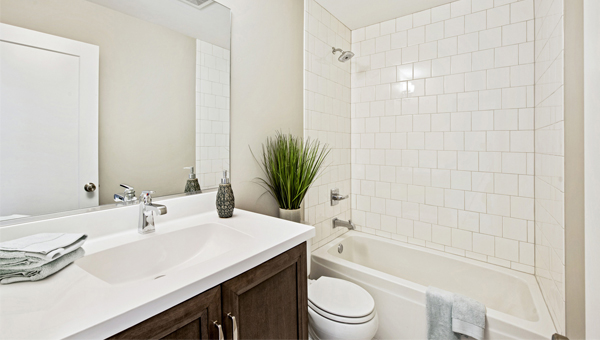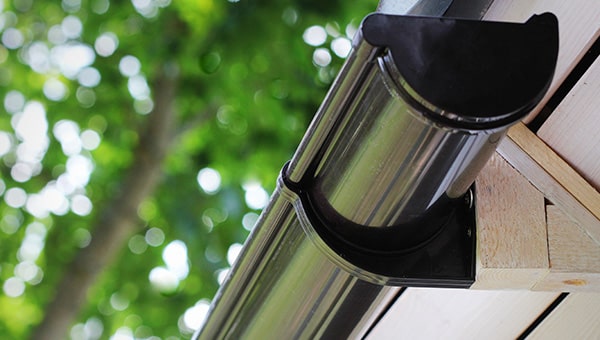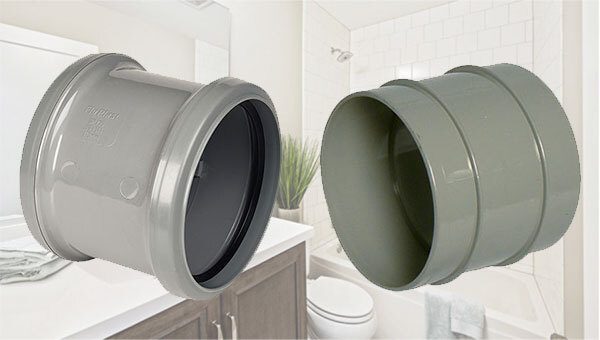 Soil pipes probably have the most unpleasant job of all your household systems. They have to carry away your bodily waste, day in and day out, with very little thought ever given to their suffering. That is, at least, until either something goes wrong or you need to add to its workload...then you can't know enough about them.
Soil pipes probably have the most unpleasant job of all your household systems. They have to carry away your bodily waste, day in and day out, with very little thought ever given to their suffering. That is, at least, until either something goes wrong or you need to add to its workload...then you can't know enough about them.
In this article, we're going to concentrate on what you need to know for expanding your existing system or installing an entirely new one. Before we get started, though, let's make sure we're all on the same page by asking a simple question.
What is a Soil System?
A Soil System is a network of pipes and fittings (usually 110mm in diameter) that run through your property, connecting any toilets, urinals, or bidets to the main drain. These pipes ensure that water fouled by bodily waste is transported safely away into the sewer or an off-mains treatment/storage tank if you have one.
It is not to be confused with a Waste System, which is made up of smaller diameter pipes designed to handle wastewater from sinks, bathtubs, showers, dishwashers, and washing machines. Even though the two systems can often be connected together, they do require different types of pipe. For advice on waste systems, check out our other article, "Push-Fit or Solvent Weld - which waste pipe system is better?". For more information about soil and waste systems in general, have a read of our "Basic Guide to Soil & Waste Systems".
Confident we're talking about the right system? Great! Then let's take a deeper dive into what types of soil systems are available.
What type of soil systems are there?
The first consideration you have to make when choosing a soil system is what type of material you want it to be made from and what type of material it will be connected to.
Traditionally, Cast Iron was the material of choice, due to its strength, long lifespan, high tolerance to temperature and acidic waste, and the noise dampening effect of its density. However, while you can still buy Cast Iron soil pipes and fittings today, the more popular material choice for many professionals, and DIY enthusiasts alike, is now PVC plastic.
PVC soil pipes and fittings are deceptively robust, resistant to chemicals, more flexible, and much lighter in weight than their cast iron counterparts, making them easier and safer to handle and install. Crucially, they are also far cheaper in price. For these reasons, we feel that PVC soil pipes offer a better modern-day solution for our customers, hence why we stock the range of products we do.
However, when it comes to PVC soil pipes, there is an additional choice to be made—the choice between Ring Seal or Solvent Weld connections.
What is a Ring Seal connection?
A ring seal soil system utilises push-fit joints with rubber ring seals to create watertight connections. Pipe lengths in this style come with one socketed end and one plain end as standard. The socketed end houses the rubber ring seal, and the plain end is chamfered to allow it to slide into the socket end of another pipe or fitting without dislodging the seal. With the liberal application of some silicone lubricant around the chamfered end and ring seal, the connection is simply made by firmly pushing one into the other...hence it being called a "push-fit" joint. This is a forgiving style of jointing that can be pulled apart and reconnected as many times as needed when installing a soil system, making replacing damaged or worn out sections relatively quick and easy.
What is a Solvent Weld connection?
A solvent weld system utilises a chemical bonding process to permanently join pipes and fittings together. Pipe lengths in this style come plain ended and require socketed couplers to connect them. Solvent cement is applied to both the outer surface of the plain end and the inner surface of the intended socket before being joined. The solvent cement then causes a chemical reaction that melts the two surfaces together. This creates a permanent gas and watertight joint that is unforgiving in its construction. Once the weld is set, the pipe and fitting essentially become one solid piece that cannot be pulled apart to realign or correct a mistake.
Which Soil Pipe System is best?
Both ring seal and solvent weld connection systems are perfectly suitable for use in creating strong, durable, and reliable soil pipe systems. They are both manufactured to the same standards, can withstand high-temperature liquids (up to 76 degrees as standard and up to 100 degrees for intervals of no more than two minutes), are resistant to most inorganic acids, and both can be used externally without needing to be painted.
The difference between them is purely down to the permanence of the joints and ease of assembly.
| System Comparison | ||
|---|---|---|
| Pros | Cons | |
| Ring Seal | Simple, flexible push-fit jointing method. | Prone to leaks if not installed correctly. |
| Quick and easy to connect all parts of the system together. | Ring seals can degrade over time and need replacing. | |
| Easily dismantled. | ||
| Ready for use right away. | ||
| Pros | Cons | |
| Solvent Weld | Strong, permanent jointing method. | Takes longer to connect parts together. |
| More impact resistant. | Can't be easily dismantled once weld is set. | |
| Joints less likely to leak. | Should be left for 24hrs before fully testing. | |
Solvent weld systems are sometimes favoured for use in commercial or public applications, as the permanent bonding of the joints does make them a bit more robust against impacts. However, the flip side to this is that this same rigid bond makes the system, as a whole, much less flexible and a lot more time consuming to repair than a push-fit one. Ultimately, it really just comes down to personal choice.
For DIY projects, however, ring seal soil systems are definitely cheaper to buy, easier to work with, and quicker to install. For this reason, we choose to stock Floplast's 110mm Ring Seal range of soil pipes and fittings, as we feel confident in being able to recommend them to the broadest range of customers for the most common application needs.
But what if you already have an existing solvent weld system? What if your house has an existing Cast Iron soil stack that you don't want to replace? Can you install a new toilet or repair an existing connection with Ring Seal products if you don't have a full Ring Seal system? Well, there we have some good news.
Can Ring Seal and Solvent Weld systems be mixed?
Yes, they can, is the simple answer. Since all 110mm soil pipes and fittings are usually manufactured to the same standards, they tend to be pretty much identical in size regardless of whether they are designed for ring seal or solvent weld connections. This technically means that ring seal pipes can be connected to solvent weld systems and vice versa. The more pertinent question, however, is whether they should.
In an ideal world, you should always endeavour to keep your drainage systems as simple and easy to maintain as possible. All pipes and fittings should be the same material and same connection type, whether they be soil, waste, or overflow. It makes installation, maintenance and repair work a lot easier and keeps everything looking neat and tidy. Unfortunately, however, we rarely ever get to live in an ideal world and so have to make the best of what we have. As long as you are using the right sized pipe for the right job (110mm for soil and 30/40/50mm for waste applications), and you are able to create a watertight joint between any pipes and fittings, mixing up the connection types is not the end of the world.
The only thing you can't do is remove the snap cap and rubber seal from a push-fit fitting to use it as a solvent weld one. This is because the push-fit socket is made bigger than a solvent socket to accommodate the seal, meaning that, even with extra solvent cement, you would be unable to get a seal on the pipe. What you should do instead is either remove the push-fit socket entirely with a hacksaw (being sure to remove any burrs with a file afterwards) to leave a plain end for fitting into a solvent socket, or use a conversion fitting that has one push-fit end and one solvent end to make the connection.
Just remember that, when dealing with pipes and fittings that have one plain end and one socketed end, the plain end (or spigot) should always point downstream (with the flow of water) and the socket end upstream (against the flow of water). So, for example, when connecting a toilet, the socket end of the pipe should always point back towards the toilet, and the plain end should always point away from it.
Can PVC soil pipes be connected to an existing Cast Iron soil stack?
Yes, they can, and often are...no caveats this time. Many older properties in the UK still have cast iron soil stacks that either work perfectly well or are just too much trouble to replace. It is common in these situations to find that the pipework connecting the soil and waste appliances to it have been replaced with PVC over the years. This can be done via the use of universal pipe connectors and boss adaptors that facilitate a watertight joint between PVC and Cast Iron pipes and fittings.
The only thing to be wary of is the fact that older cast iron pipes can still contain elements of asbestos. If your project requires you to cut into or remove parts of an existing cast iron pipe, our advice would be to consult with a professional plumber first.
Once you've decided which connection type is best for you, and you know what's needed to connect it to your existing soil stack (if that is your intent), the next step is to buy it and get it installed. If you decide that a high-quality Ring Seal PVC push-fit system is the way to go, we stock a full range of 110mm Floplast pipes and fittings ready to help.
Should you have any questions or need any further advice about your soil and waste systems, though, check out our Soil & Waste FAQ article or contact JDP today. Our team of experts are always on hand to help with all of your drainage needs.


